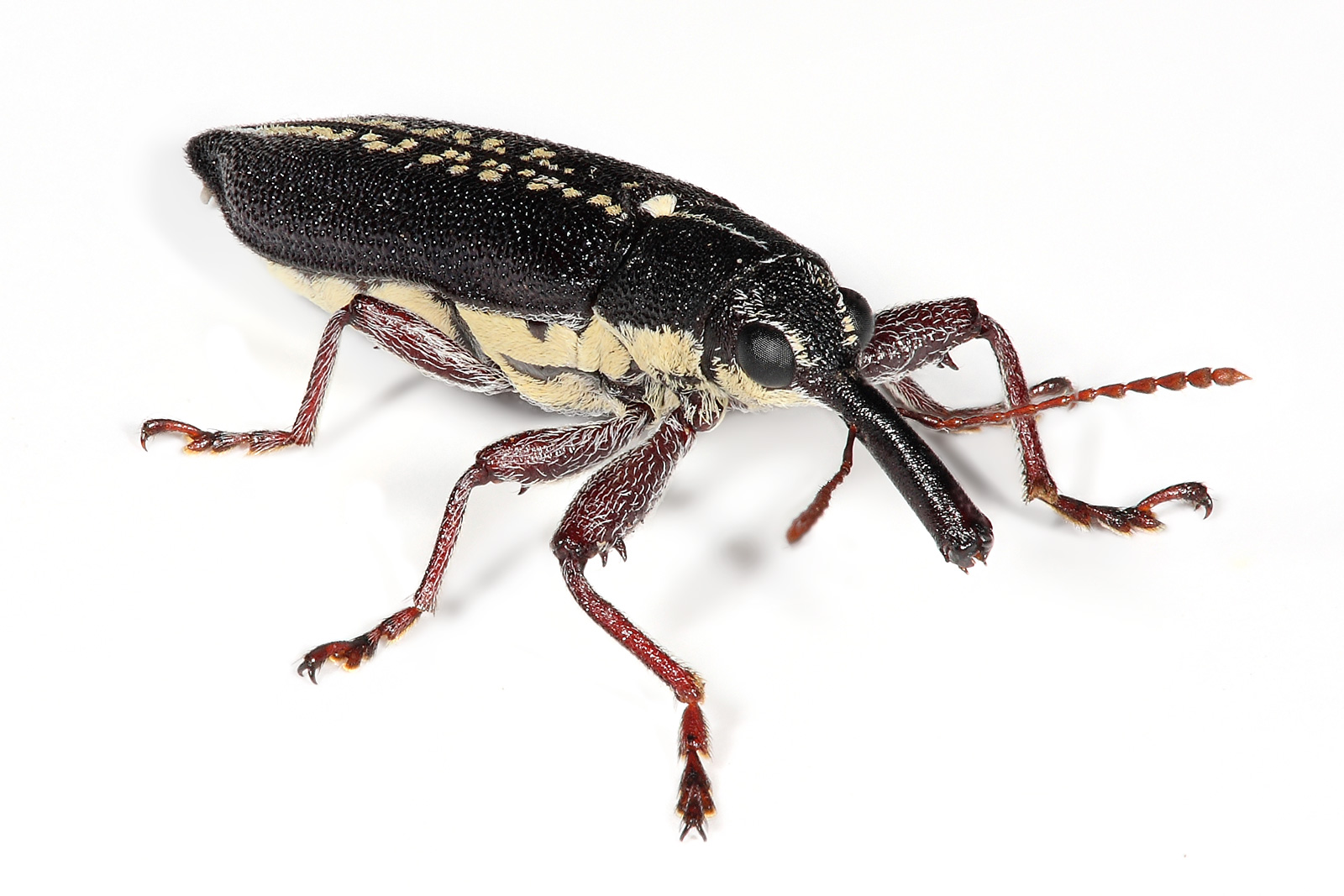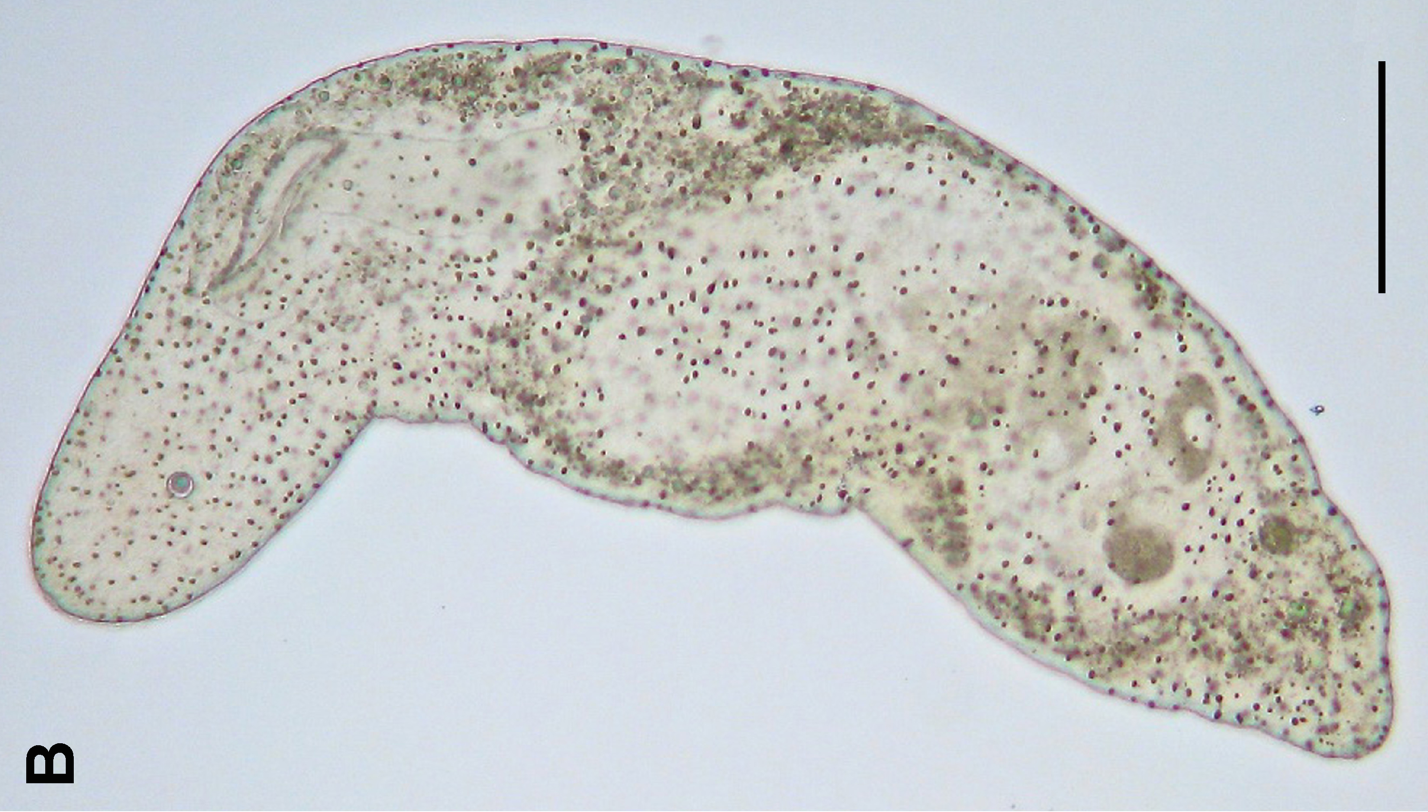|
Protostome
Protostomia () is the clade of animals once thought to be characterized by the formation of the organism's mouth before its anus during embryonic development. This nature has since been discovered to be extremely variable among Protostomia's members, although the reverse is typically true of its sister clade, Deuterostomia. Well-known examples of protostomes are arthropods, molluscs, annelids, flatworms and nematodes. They are also called schizocoelomates since schizocoely typically occurs in them. Together with the Deuterostomia and Xenacoelomorpha, these form the clade Bilateria, animals with bilateral symmetry, anteroposterior axis and three germ layers. Protostomy In animals at least as complex as earthworms, the first phase in gut development involves the embryo forming a dent on one side (the blastopore) which deepens to become its digestive tube (the archenteron). In the sister-clade, the deuterostomes (), the original dent becomes the anus while the gut eventua ... [...More Info...] [...Related Items...] OR: [Wikipedia] [Google] [Baidu] |
Deuterostomia
Deuterostomes (from Ancient Greek, Greek: ) are bilaterian animals of the superphylum Deuterostomia (), typically characterized by their anus forming before the mouth during embryogenesis, embryonic development. Deuterostomia comprises three Phylum, phyla: chordate, Chordata, Echinodermata, hemichordate, Hemichordata, and the extinct clade Cambroernida. In deuterostomes, the developing embryo's first opening (the blastopore) becomes the anus and cloaca, while the mouth is formed at a different site later on. This was initially the group's distinguishing characteristic, but deuterostomy has since been discovered among protostomes as well. The deuterostomes are also known as enterocoelomates, because their coelom develops through pouching of the gut, enterocoely. Deuterostomia's sister clade is Protostomia, animals that develop mouth first and whose digestive tract development is more varied. Protostomia includes the ecdysozoans and spiralians, as well as the extinct ''Kimberella'' ... [...More Info...] [...Related Items...] OR: [Wikipedia] [Google] [Baidu] |
Bilateria
Bilateria () is a large clade of animals characterised by bilateral symmetry during embryonic development. This means their body plans are laid around a longitudinal axis with a front (or "head") and a rear (or "tail") end, as well as a left–right–symmetrical belly ( ventral) and back ( dorsal) surface. Nearly all bilaterians maintain a bilaterally symmetrical body as adults; the most notable exception is the echinoderms, which have pentaradial symmetry as adults, but bilateral symmetry as embryos. With few exceptions, bilaterian embryos are triploblastic, having three germ layers: endoderm, mesoderm and ectoderm, and have complete digestive tracts with a separate mouth and anus. Some bilaterians lack body cavities, while others have a primary body cavity derived from the blastocoel, or a secondary cavity, the coelom. Cephalization is a characteristic feature among most bilaterians, where the sense organs and central nerve ganglia become concentrated at th ... [...More Info...] [...Related Items...] OR: [Wikipedia] [Google] [Baidu] |
Annelid
The annelids (), also known as the segmented worms, are animals that comprise the phylum Annelida (; ). The phylum contains over 22,000 extant species, including ragworms, earthworms, and leeches. The species exist in and have adapted to various ecologies – some in marine environments as distinct as tidal zones and hydrothermal vents, others in fresh water, and yet others in moist terrestrial environments. The annelids are bilaterally symmetrical, triploblastic, coelomate, invertebrate organisms. They also have parapodia for locomotion. Most textbooks still use the traditional division into polychaetes (almost all marine), oligochaetes (which include earthworms) and leech-like species. Cladistic research since 1997 has radically changed this scheme, viewing leeches as a sub-group of oligochaetes and oligochaetes as a sub-group of polychaetes. In addition, the Pogonophora, Echiura and Sipuncula, previously regarded as separate phyla, are now regarded as sub-grou ... [...More Info...] [...Related Items...] OR: [Wikipedia] [Google] [Baidu] |
Spiralia
The Spiralia are a morphologically diverse clade of protostome animals, including within their number the molluscs, annelids, platyhelminths and other Taxon, taxa. The term ''Spiralia'' is applied to those phyla that exhibit canonical spiral cleavage, a pattern of early development found in most members of the Lophotrochozoa. Distribution of spiralian development across phylogeny Members of the molluscs, annelids, platyhelminths and nemerteans have all been shown to exhibit spiral cleavage in its classical form. Other spiralian phyla (rotifers, brachiopods, phoronids, gastrotrichs, and bryozoans) are also said to display a derived form of spiral cleavage in at least a portion of their constituent species, although evidence for this is sparse. Lophotrochozoa within Spiralia Previously, spiral cleavage was thought to be unique to the Spiralia in the strictest sense—animals such as molluscs and annelids which exhibit classical spiral cleavage. The presence of spiral cleavage in ... [...More Info...] [...Related Items...] OR: [Wikipedia] [Google] [Baidu] |
Ecdysozoa
Ecdysozoa () is a group of protostome animals, including Arthropoda (insects, chelicerates (including arachnids), crustaceans, and myriapods), Nematoda, and several smaller phylum (biology), phyla. The grouping of these animal phyla into a single clade was first proposed by Eernisse ''et al.'' (1992) based on a phylogenetic analysis of 141 morphological characters of ultrastructural and embryological phenotypes. This clade, that is, a group consisting of a common ancestor and all its descendants, was formally named by Aguinaldo ''et al.'' in 1997, based mainly on phylogenetic trees constructed using 18S ribosomal RNA genes. A large study in 2008 by Dunn ''et al.'' strongly supported the monophyly of Ecdysozoa. The group Ecdysozoa is supported by many Morphology (biology), morphological characters, including growth by ecdysis, with moulting of the cuticle – without mitosis in the epidermis – under control of the prohormone ecdysone, and internal fertilization. The group was i ... [...More Info...] [...Related Items...] OR: [Wikipedia] [Google] [Baidu] |
Xenacoelomorpha
Xenacoelomorpha () is a small phylum of bilaterian invertebrate animals, consisting of two sister groups: xenoturbellids and acoelomorphs. This new phylum was named in February 2011 and suggested based on morphological synapomorphies (physical appearances shared by the animals in the clade), which was then confirmed by phylogenomic analyses of molecular data (similarities in the DNA of the animals within the clade). Phylogenetics Prior to molecular studies, xenacoelomorphs were considered to be flatworms based on their superficial similarities. Like flatworms, they do not have a coelom and are dorsoventrally flattened. With the advent of phylogenetics, '' Xenoturbella'' and Acoelomorpha were found to be sister groups and only distantly related to flatworms. Initially this phylum was considered to be a member of the deuterostomes, but because of recent transcriptome analyses, it was concluded that phylum Xenacoelomorpha is the sister group to the Nephrozoa, which includes ... [...More Info...] [...Related Items...] OR: [Wikipedia] [Google] [Baidu] |
Lophotrochozoa
Lophotrochozoa (, "crest/wheel animals") is a clade of protostome animals within the Spiralia. The taxon was established as a monophyletic group based on molecular evidence. The clade includes animals like annelids, molluscs, bryozoans, and brachiopods. Groups Lophotrochozoa was defined in 1995 as the "last common ancestor of the three traditional lophophorate taxa ( brachiopods, bryozoans, and phoronid worms), the mollusks and the annelids, and all of the descendants of that common ancestor". It is a cladistic definition (a node-based name), so the affiliation to Lophotrochozoa of spiralian groups not mentioned directly in the definition depends on the topology of the spiralian tree of life, and in some phylogenetic hypotheses, Lophotrochozoa may even be synonymous to Spiralia. Nemertea and Orthonectida (if not directly considered as part of Annelida) are probably lophotrochozoan phyla; Dicyemida, Gastrotricha, and Platyhelminthes may be lophotrochozoans or placed in the ... [...More Info...] [...Related Items...] OR: [Wikipedia] [Google] [Baidu] |
Nematode
The nematodes ( or ; ; ), roundworms or eelworms constitute the phylum Nematoda. Species in the phylum inhabit a broad range of environments. Most species are free-living, feeding on microorganisms, but many are parasitic. Parasitic worms (helminths) are the cause of soil-transmitted helminthiases. They are classified along with arthropods, tardigrades and other moulting animals in the clade Ecdysozoa. Unlike the flatworms, nematodes have a tubular digestive system, with openings at both ends. Like tardigrades, they have a reduced number of Hox genes, but their sister phylum Nematomorpha has kept the ancestral protostome Hox genotype, which shows that the reduction has occurred within the nematode phylum. Nematode species can be difficult to distinguish from one another. Consequently, estimates of the number of nematode species are uncertain. A 2013 survey of animal biodiversity suggested there are over 25,000. Estimates of the total number of extant species are su ... [...More Info...] [...Related Items...] OR: [Wikipedia] [Google] [Baidu] |
Schizocoely
Schizocoely (adjective forms: schizocoelous or schizocoelic) is a process by which some animal embryos develop. The schizocoely mechanism occurs when secondary body cavities (coeloms) are formed by splitting a solid mass of mesodermal embryonic tissue. All schizocoelomates are protostomians and they show holoblastic, spiral, determinate cleavage. Etymology The term ''schizocoely'' derives from the Ancient Greek words (), meaning 'to split', and (), meaning 'cavity'. This refers to the fact that fluid-filled body cavities are formed by splitting of mesodermal cells. Taxonomic distribution Animals called protostomes develop through schizocoely for which they are also known as schizocoelomates. Schizocoelous development often occurs in protostomes, as in phyla Mollusca, Annelida, and Arthropoda. Deuterostomes usually exhibit enterocoely; however, some deuterostomes like enteropneusts can exhibit schizocoely as well. Embryonic development The term refers to the order of ... [...More Info...] [...Related Items...] OR: [Wikipedia] [Google] [Baidu] |
Nematode
The nematodes ( or ; ; ), roundworms or eelworms constitute the phylum Nematoda. Species in the phylum inhabit a broad range of environments. Most species are free-living, feeding on microorganisms, but many are parasitic. Parasitic worms (helminths) are the cause of soil-transmitted helminthiases. They are classified along with arthropods, tardigrades and other moulting animals in the clade Ecdysozoa. Unlike the flatworms, nematodes have a tubular digestive system, with openings at both ends. Like tardigrades, they have a reduced number of Hox genes, but their sister phylum Nematomorpha has kept the ancestral protostome Hox genotype, which shows that the reduction has occurred within the nematode phylum. Nematode species can be difficult to distinguish from one another. Consequently, estimates of the number of nematode species are uncertain. A 2013 survey of animal biodiversity suggested there are over 25,000. Estimates of the total number of extant species are su ... [...More Info...] [...Related Items...] OR: [Wikipedia] [Google] [Baidu] |
Karl Grobben
Karl Grobben (27 August 1854, in Brno – 13 April 1945, in Salzburg) was an Austrian zoologist. He graduated from, and later worked at, the University of Vienna, chiefly on molluscs and crustaceans. He was also the editor of a new edition of Carl Friedrich Wilhelm Claus' ''Lehrbuch der Zoologie'', and the coiner of the terms ''protostome'' and ''deuterostome''. Taxonomy Taxa named by Grobben include: *Eumalacostraca Grobben, 1892 * Sagittidae Claus & Grobben, 1905 * Sagittoidea Claus & Grobben, 1905 *Protostomia Grobben, 1908 *Deuterostomia Deuterostomes (from Ancient Greek, Greek: ) are bilaterian animals of the superphylum Deuterostomia (), typically characterized by their anus forming before the mouth during embryogenesis, embryonic development. Deuterostomia comprises three Phyl ... Grobben, 1908 Taxa named in Grobben's honour include: *'' Gerbillus grobbeni'' Klaptocz, 1909 *'' Sphaerophthalmus grobbeni'' Spandl, 1923 *'' Limnadia grobbeni'' Daday, 1925 *'' Actinia grob ... [...More Info...] [...Related Items...] OR: [Wikipedia] [Google] [Baidu] |






